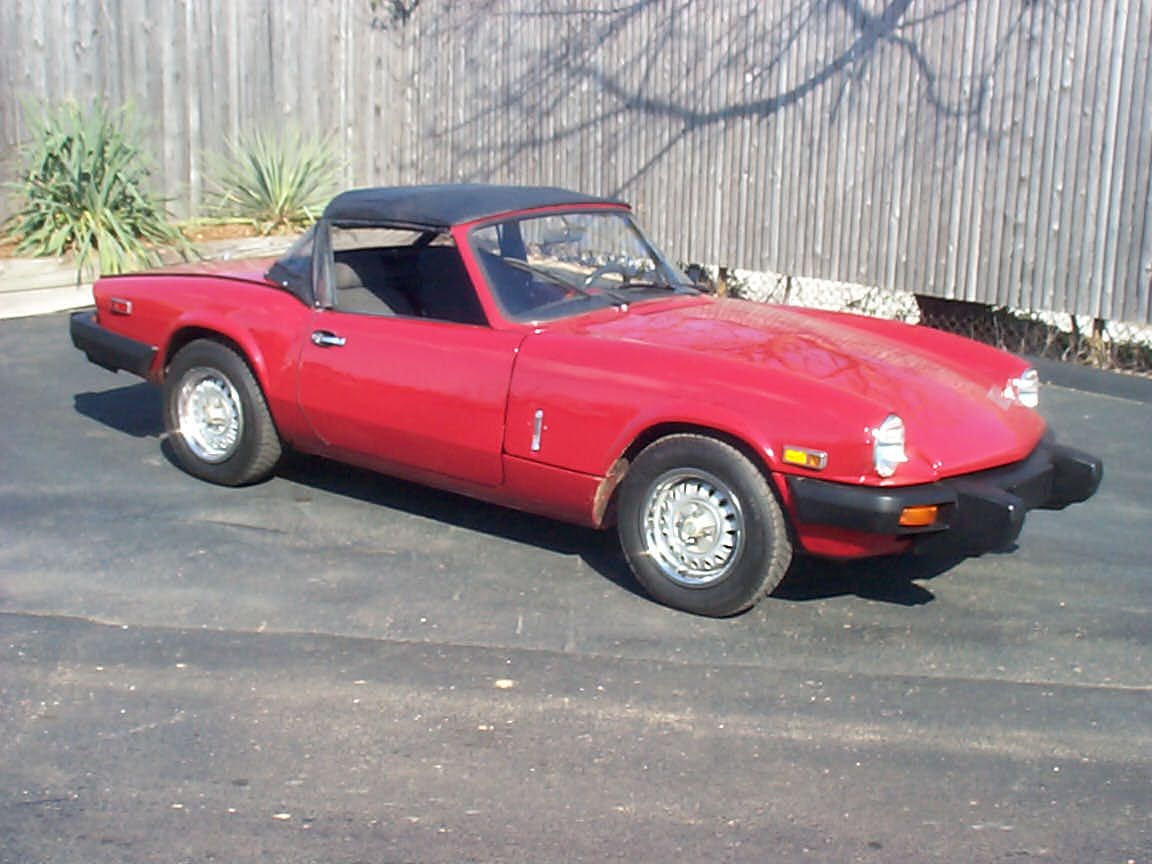-
Insurance
InsuranceAbout our productsLearn about insuringGet a quote Get current values, historical values, model history and more.
-
Valuation
ValuationHagerty valuation toolLook up a vehicle value Get current values, historical values, model history and more.
-
Events
EventsHagerty official eventsHagerty ClubhouseEvent calendar
-
Entertainment
EntertainmentMore to explore
- Portal login
1968 Triumph Spitfire
Mk III Convertible 1.3 L
Vehicle values by condition
Fair
Condition 4
£3,700
#4 cars are daily drivers, with flaws visible to the naked eye. The chrome might have pitting or scratches, the windshield might be chipped.
Good
Condition 3
£5,400
#3 cars could possess some, but not all of the issues of a #4 car, but they will be balanced by other factors such as a fresh paint job or a new, correct interior.
Excellent
Condition 2
£10,200
#2 cars could win a local or regional show. They can be former #1 cars that have been driven or have aged. Seasoned observers will have to look closely for flaws.
Concours
Condition 1
£16,000
#1 vehicles are the best in the world. The visual image is of the best car, unmodified, in the right colours, driving onto the lawn at the finest concours.
Insurance premium for a
1968 Triumph Spitfire Mk III Convertible 1296
valued at £5,400
£109.03
/ year*
History of the 1967 - 1970 Triumph Spitfire

1967 - 1970 Triumph Spitfire
The Triumph Spitfire was launched at the 1962 Earls Court Motor Show, with big shoes to fill. Supermarine Spitfire fighters had won the Battle of Britain in 1940. Could a tiny sports car based on the Triumph Herald saloon live up to the challenge?
Despite the success of the angular Herald, Standard-Triumph was broke in 1959 and it was only its purchase in 1960 by British Leyland that saved the Spitfire. It was rumoured that the Spitfire name was traded with Vickers for the Vanguard name that Triumph owned.
But the Spitfire delivered on its promise, with five variants produced until 1980. It was the last of the 1960s sports cars to remain in serious production, and outlasted all its rivals. Only the MGB outsold it, scoring 365,000 sales in the same period, against the Spitfire’s 314,332.
The Spitfire was designed by Giovanni Michelotti, the Italian who styled most of Triumph’s products in the 1960s and was known for his ability to get things done quickly. Michelotti shortened the Herald’s backbone chassis, added front disc brakes and a front-hinged bonnet, like an E-Type. The Spitfire also inherited the Herald’s rack-and-pinion steering and 25-foot turning circle, as tight as a London taxi, but in both directions. It also inherited the Herald’s alarming swing-axle rear end, which wasn’t corrected until 1970 when a controlling leaf was installed to stop the car raising up under hard cornering.
The Spitfire was low, even by British sports car standards. The front bumper was pure decoration, and drivers who parked carelessly found that contact with a kerb or a stone pillar could twist the entire nose of the car, so it wouldn’t latch. The Spitfire 4-cylinder was powered by a 63 bhp version of the Herald’s 1,147cc motor, with twin SU carburettors, which gave a top speed around 90 mph.
The little roadster also featured windup windows for an upmarket touch and and the side members of the body were strengthened for a unibody effect. Gauges were set in a central panel to simplify left-hand-drive production and rubber floor mats were fitted. In 1964, a hard top, bolt-on wire wheels and overdrive were added as options in the Mk 2, along with three higher stages of tune.
The Mk 3 appeared in 1967 with a raised front bumper for the “bone-in-the teeth” look, and the larger 1,296cc engine was good for 75 bhp and 95 mph. The Mk IV of 1970 included the improved rear leaf-to-pivot rear suspension and Michelotti redesigned the bonnet with one-piece wings and a Kamm tail, which could be found on other Triumphs as well. The Spitfire also got a first gear synchro for its four-speed gearbox.
The final Spitfire was the 1500 of 1974, with the 1,493 cc motor and large rubber bumpers. Despite losing the wire wheel option, it sold well, and scored 95,829 sales before the end in 1980.
Hagerty Newsletter
Get your weekly dose of car news from Hagerty UK in your inbox

ADVERTISEMENT